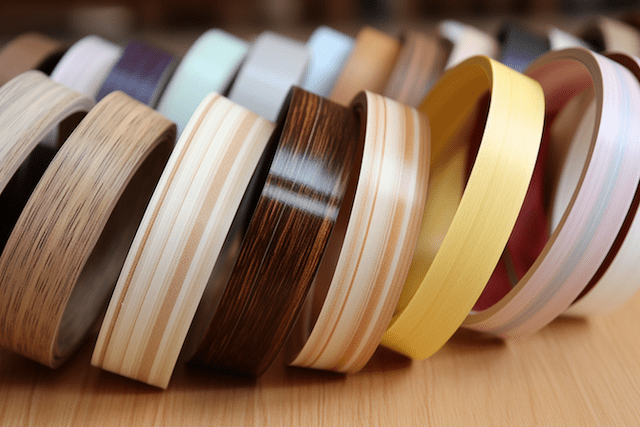When it comes to furniture and interior design, attention to detail can make all the difference. One such detail that often goes unnoticed but plays a crucial role in enhancing both durability and aesthetics is ABS edging. In this comprehensive guide, we’ll delve into the world of ABS edging, exploring its benefits, manufacturing process, applications, installation techniques, maintenance tips, and much more.
What is ABS Edging?
ABS edging, short for acrylonitrile butadiene styrene edging, is a versatile material commonly used to finish and protect the edges of various surfaces, including furniture, countertops, shelves, and panels. It consists of a thermoplastic polymer blend known for its durability and flexibility.
Benefits of ABS Edging
Durability
One of the primary advantages of ABS edging is its exceptional durability. Unlike some other edging materials, such as veneer, ABS is highly resistant to impacts, scratches, and moisture, making it ideal for high-traffic areas.
Cost-effectiveness
In addition to its durability, ABS edging offers excellent value for money. Its relatively low production costs make it an affordable option for both residential and commercial projects, without compromising on quality.
Versatility
ABS edging comes in a wide range of colors, finishes, and thicknesses, allowing designers and manufacturers to achieve various aesthetic effects. Whether you’re aiming for a sleek modern look or a classic woodgrain finish, there’s an ABS edging solution to suit your needs.
How ABS Edging is Manufactured
ABS edging is typically manufactured using a combination of acrylonitrile, butadiene, and styrene polymers, along with additives for improved performance. The production process involves extruding the polymer blend into long strips, which are then cut to the desired width and thickness.
Applications of ABS Edging
ABS edging finds extensive use across various industries and applications, including:
- Furniture Industry: In furniture manufacturing, ABS edging provides a seamless and durable finish to edges, corners, and surfaces.
- Interior Design: From kitchen cabinets to office partitions, ABS edging adds both style and protection to interior elements.
- Architectural Projects: Architects often specify ABS edging for its combination of functionality and aesthetic appeal in commercial and residential buildings.
Types of ABS Edging
ABS edging is available in a variety of types, including:
- Solid Colors: Classic and versatile, solid-colored ABS edging complements a wide range of design schemes.
- Woodgrain Finishes: Mimicking the natural beauty of wood, woodgrain ABS edging offers a cost-effective alternative to solid wood edging.
- Metallic Finishes: For a touch of sophistication, metallic-finish ABS edging adds a contemporary flair to furniture and interior fittings.
Installation Process of ABS Edging
Installing ABS edging is a straightforward process that typically involves the following steps:
- Preparation: Ensure that the surface to be edged is clean, dry, and free from any dust or debris.
- Application Techniques: Apply a suitable adhesive to the back of the ABS edging strip, then carefully position it along the edge of the surface, using a roller to ensure proper adhesion.
- Finishing Touches: Trim any excess edging material with a sharp knife or edge trimmer, then use a fine-grit sandpaper to smooth out any rough edges.
Maintenance Tips for ABS Edging
To keep ABS edging looking its best, follow these simple maintenance tips:
- Cleaning Methods: Regularly wipe down ABS edging with a mild detergent solution and a soft cloth to remove dirt and grime.
- Repairing Minor Damages: In the event of minor scratches or scuffs, gently sand the affected area with fine-grit sandpaper, then apply a matching touch-up paint if necessary.
Comparison with Other Edging Materials
When compared to alternative edging materials such as PVC and veneer, ABS edging offers several distinct advantages, including superior durability, cost-effectiveness, and versatility.
Environmental Impact of ABS Edging
While ABS is a synthetic polymer, efforts are underway to minimize its environmental impact through sustainable manufacturing practices and increased recyclability.
Innovations in ABS Edging Technology
Advancements in manufacturing technology continue to drive innovation in ABS edging, leading to improvements in quality, performance, and design options.
Common Misconceptions about ABS Edging
Despite its widespread use and proven benefits, there are some common misconceptions about ABS edging, such as concerns about its environmental impact and suitability for certain applications.
Future Trends in ABS Edging
As the demand for sustainable and versatile edging solutions grows, we can expect to see further advancements and innovations in ABS edging technology, including new colors, finishes, and eco-friendly options.
Conclusion
ABS edging offers a winning combination of durability, affordability, and versatility, making it the go-to choice for designers, manufacturers, and DIY enthusiasts alike. Whether you’re furnishing a home, outfitting an office, or embarking on a large-scale architectural project, ABS edging provides the perfect finishing touch.




